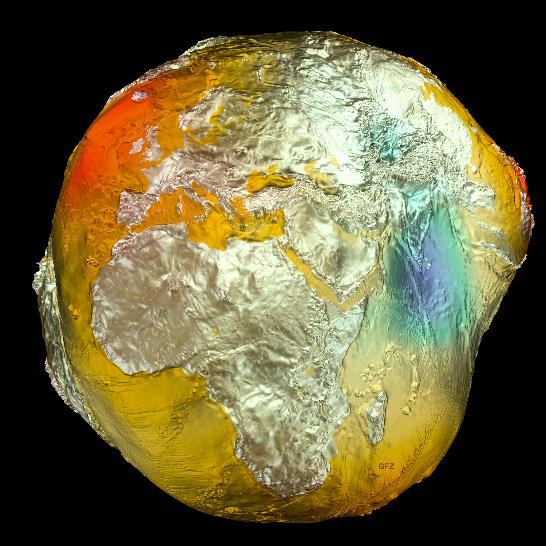| Online: | |
| Visits: | |
| Stories: |

| Story Views | |
| Now: | |
| Last Hour: | |
| Last 24 Hours: | |
| Total: | |
The “Potsdam Gravity Potato” Shows Earth’s Gravity Variations

The Earth’s gravitational model (aka the “Potsdam Potato”) is based on data from the LAGEOS, GRACE, and GOCE satellites and surface data. Credit: GFZ
People tend to think of gravity here on Earth as a uniform and consistent thing. Stand anywhere on the globe, at any time of year, and you’ll feel the same downward pull of a single G. But in fact, Earth’s gravitational field is subject to variations that occur over time. This is due to a combination of factors, such as the uneven distributions of mass in the oceans, continents, and deep interior, as well as climate-related variables like the water balance of continents, and the melting or growing of glaciers.
And now, for the first time ever, these variations have been captured in the image known as the “Potsdam Gravity Potato” – a visualization of the Earth’s gravity field model produced by the German Research Center for Geophysics’ (GFZ) Helmholtz’s Center in Potsdam, Germany.
And as you can see from the image above, it bears a striking resemblance to a potato. But what is more striking is the fact that through these models, the Earth’s gravitational field is depicted not as a solid body, but as a dynamic surface that varies over time.(…)
Read the rest of The “Potsdam Gravity Potato” Shows Earth’s Gravity Variations (547 words)
© mwill for Universe Today, 2014. |
Permalink |
No comment |
Post tags: EIGEN-6C, esa, German Research Center for Geophysics, GFZ, GOCE, GRACE, gravity field model, Helmholtz’s Center, LAGEOS, Satellites
Feed enhanced by Better Feed from Ozh
Source: http://www.universetoday.com/116801/the-potsdam-gravity-potato-shows-earths-gravity-variations/



